Part 1 – Evidence questioning the most widely held vaccine assumptions.
Part 2 – A look at a small fraction of the peer reviewed, published science which raises concerns about both vaccine efficacy and safety.
Part 3 – An exploration of the problems establishing vaccine efficacy & safety and consideration of research funding.
[Please Note: These articles form a single investigation. Reading them in order is recommended.]
![]()
Are All Vaccines Necessary?
Most children born in the U.S. in the early 1950’s received four or five vaccines. These were the smallpox and the combined diphtheria, tetanus and pertussis (DTP) vaccines. A child born the 60’s would have received these plus the oral polio vaccine (OPV) and the monovalent measles vaccine. Those born in the 70’s were no longer given the smallpox vaccine after 1972 but would be inoculated with seven vaccines, comprising of DTP, OPV and the new combined measles, mumps and rubella vaccine (MMR). From the mid 1980’s to 1990’s this increased to nine with the addition of the haemophilus influenza type B (Hib) and the hepatitis B (HepB) vaccines.
Throughout the late 1990’s to mid 2000’s this rose to 13, as the OPV was phased out to be replaced by the injected IPV and vaccines for influenza, varicella, rotavirus and pneumococcal were added. From 2005 onward the number has risen to 16 with human papillomavirus (HPV), hepatitis A (HepA) and meningcoccal now on the schedule.
The public health value of some of these vaccines is uncertain. For HPV in particular the evidence suggests the risks significantly outweigh any possible health benefits.
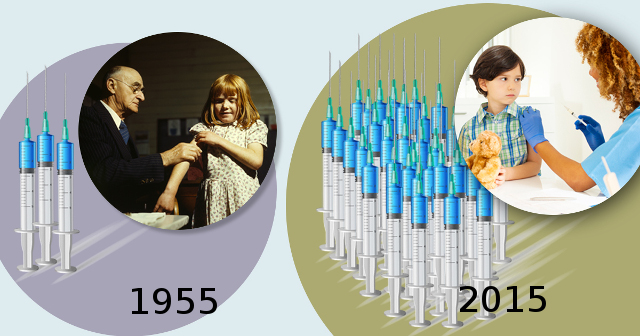
In both the U.S. and the UK. Children are routinely offered the HepB vaccine. Following its introduction in 1991, there are now 6 recombinant HepB vaccines licensed for use in the U.S. Since then reported U.S. HepB cases, in a population of more than 300 million, have dropped from approximately 18,000 to just over 3000 in 2016. The vaccine probably contributed to this reduction in infection. Prior to 1991, relative infection rates were far higher in developing nations and that remains the case.
Hepatitis B is a virus induced liver disease. The virus is blood born and contracted through contact with infected blood or semen. In adults 94% to 98% of acute cases are short lived and pass without causing any long lasting liver damage. Where acute episodes persist it can lead to chronic liver disease, cirrhosis and liver cancer. However, infection during the first year of life causes chronic liver disease in approximately 80% – 90% of cases with 30% – 50% of those infected under the age of six going on to develop chronic illness.
It initially seems giving all infants the HepB vaccine is a sensible precaution. Yet, as stressed throughout this series, the situation is more complex. The children primarily at risk of hepatitis B are those born to hepatitis B infected mothers. HepB is extremely rare in childhood and is not highly contagious. Infections rates are a tiny fraction of those of pertussis or chicken pox (varicella).
These relatively low rates of HepB infection are higher in the third world where public health measures to stop the spread of infection lag behind those of other nations. Child to child infection is a small risk in developing nations and targeted childhood HepB vaccination programs in the third world will probably benefit public health.
 In developed nations, with higher overall standards of public health, HepB is overwhelmingly a health threat for adults with the average age of infection between 30 – 39yrs. At risk groups are primarily intravenous drug users, the promiscuous, health workers, travellers and the immediate family of infected people. Vaccinating children whose mothers are infected is warranted, but there are considerable risks associated with the vaccine. Multiplying those risks by administering it unnecessarily to all children makes little sense. Especially in comparison to the negligible chance of them contracting hepatitis B.
In developed nations, with higher overall standards of public health, HepB is overwhelmingly a health threat for adults with the average age of infection between 30 – 39yrs. At risk groups are primarily intravenous drug users, the promiscuous, health workers, travellers and the immediate family of infected people. Vaccinating children whose mothers are infected is warranted, but there are considerable risks associated with the vaccine. Multiplying those risks by administering it unnecessarily to all children makes little sense. Especially in comparison to the negligible chance of them contracting hepatitis B.
In the U.S. alone the Vaccine Adverse Event Reporting System (VAERS) has recorded 91,474 adverse events for Hepatitis B and Hepatitis B containing vaccines. Many of these reactions, like short lived fever, irritability, diarrhea, fatigue, weakness, diminished appetite and rhinitis are relatively innocuous. However, far more harmful reactions are evident.
Approximately half of those serious Hepatitis B adverse events impacted children under 3ys old with an estimated 1,635 child deaths reported. Excluding combined vaccinations, containing the HepB component, there were 21,112 adverse events solely attributed to the monovalent HepB vaccine. By July 2019 926 claims had been filed with the NVICP with 829 cases of serious harm and 97 deaths.
In developed nations, where childhood HepB infection rates are extremely low, universal childhood HepB inoculation appears to present an unwarranted health risk. Very careful consideration and screening is necessary prior to giving children the HepB vaccination. Currently, this appraisal is not happening and any who suggests it should are attacked as anti-vaxxers.
In many developed nations, including the UK, the Hepatitis A (HepA) vaccine is only offered to those deemed to be in a high risk category. Again, these risks are associated with adult behaviours. Travel to infectious areas, employment patters, sexual behaviour, pre-existing conditions and drug use elevate the risk. Like HepB it is a viral disease of the liver but does not present a threat to life. Those without underlying illness, which may cause complications, will recover in a couple of months.
In the U.S. the HepA vaccine is routinely offered to all children between 12 – 23 months. There are three U.S. licenced HepA vaccines. Merck make VAQTA, an inactivated HepA vaccine and GlaxoSmithKline make both HAVRIX, another inactivated HepA vaccine, and TWINRIX, which is a combined vaccine containing both HAVRIX and their recombinant HepB vaccine ENGERIX-B.
By 2019 VAERS reported 41,240 HepA vaccine injuries. While most were insignificant, there were 3,292 hospitalizations, 865 related disabilities and 142 deaths reported. The HepA vaccines were added to the list of NVICP Vaccine Injury Table in 2004. There have been 145 claims, including 7 deaths and 138 serious injuries. For a non fatal, relatively harmless disease there appears to be no medical justification at all for inoculating children with the HepA vaccine. However, it is only stupid ‘anti-vaxxers’ who care.
The widely held assumption that all childhood vaccines are beneficial, or even necessary, is not reflected by the evidence. Many are, but as we have repeatedly highlighted, not all vaccines are created equal. Perhaps the most stark example is the HPV vaccine. The evidence strongly suggests it is both harmful and unnecessary.
The HPV Vaccine Disgrace

There are about 200 known variants of the Human papillomaviruses (HPV). Once infected, 70% of infections clear naturally in less than a year and 90% in less than two. For this vast majority, natural antibodies protect against future HPV infection, though this isn’t necessarily life long. About 75% of HPV infections are associated with non cancerous warts. While unpleasant, they present little risk to health.
Some strains do presents a significant cancer risk. HPV 16 and 18 are associated with nearly all cervical cancers. About 20% of HPV variants are associated to a lesser degree with other cancers, such as penile cancer. Globally 85% of these cancers occur in developing nations with the World Health Organisation estimating 266,000 deaths in 2012, of which 12% were attributable to cervical cancer.
HPV vaccines are primarily marketed to protect women against cervical cancer. In North America the chances of contracting cervical cancer are approximately 6.4/100,000 (1/15625) with a marginally higher risk in the UK. The risks increase with age and the average age for developing cervical cancer is 49. Other than cervical cancer, the average age for the onset of other HPV cancers is at least 61yrs. The chances of getting cervical cancer under the age of 20 are virtually non existent.

Penile cancer is extremely rare with less than a 1/100,000 chance of succumbing to it. The average age for contracting penile cancer in the U.S. is 69yrs. If diagnosed there is an average 67% chance of surviving at least another 5 years.
Cervical cancer used to be one of the biggests cancer killers for women in both the U.S. and the UK. Fortunately, following the introduction of the Papanicolaou or PAP test, cervical cancer rates dropped significantly. However, rates have remained largely unchanged over the last 15 years. Research suggests improvements in PAP screening could further reduce incident rates by up to 83%. The average 5yr survival rate for women diagnosed with cervical cancer in the U.S. is 66%. Screening is not offered to women under the age of 21 as they are not at risk of developing cervical cancer.
HPV is a common sexually transmitted infection, contracted through intimate skin to skin contact. Currently both the CDC and the NHS in the UK recommend vaccination of all 11-13 yr old girls and boys. In the U.S. in 2018 the CDC expanded the market by recommending older women up to 45yrs also be offered the vaccine.
The girls first immunised are now aged between 28 – 30yrs. A 2019 study by researchers at the University of British Columbia stated that incidents of cervical dysplasia (potentially precancerous lesions), an indicator of possible cancer risks, were markedly lower for women vaccinated as children. However, they added:
“…..progression of an HPV infection to cervical cancer takes decades, thus continuous evaluation using population-based data offers early and critical insight into the real-world impact of vaccination…..very few studies have documented the population-level impact of HPV vaccination in young women on precancerous lesions as they enter cervical cancer screening programs.”
Perhaps these results suggest reason for optimism although no conclusion can be drawn. Certainly the mainstream media (MSM) have been keen to highlight the possible reduction in HPV infection, though it remains to be seen what impact vaccination will have on cancer rates. There is reason for concern.
The potential benefits need to be balanced against the risk of harm, for which there is far more data. Firstly we should note the CDC’s own 2015 study conclusions:
“Cervical cancer is not a very common cancer in the developed world and is even rarer in younger populations…..Precancerous lesions are frequently found among these age groups and are more likely to regress than at older ages.”
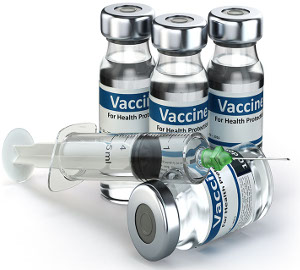
Vaccine in vial with syringe. Vaccination concept. 3d
In less than 15 years of the U.S. HPV vaccination program VAERS recorded more than 62,000 adverse events. This included at least 6,300 hospital admissions, over 3000 disabling conditions and more than 500 deaths. Some 415 claims have been filed with the NVICP, comprising of 400 serious disabling events and 15 deaths. Though the HHS, having dispatched their teams of DOJ lawyers against claimants and their families in jury free courts, gave compensation to just 134 families.
Three HPV vaccines have been developed. GlaxoSmithKline make a bivalent version called CERVARIX and Merck make the quadravalent GARDASIL and the 9-valent recombinant GARDASIL 9. GARDASIL 9 is now the most widely used as neither CERVARIX nor the original GARDASIL are available in the U.S. It is routinely administered in a number of countries, including the U.S. and the UK. GARDASIL was first approved in the U.S. by the the Food and Drug Administration’s Center for Biologics Evaluations and Research (CBER) in 2006 with GARDASIL 9 approved in 2014.
The FDA based their approval of GARDASIL upon 6 trials conducted by Merck. The vaccine manufacturer mainly studied 12000 16 – 23yr old vaccinated young people for less than two years. Only 54% were female yet, until recently, the HPV vaccine was exclusively administered to girls.
The studies excluded children and young adults with health problems and none of them tested the vaccination in combination with others routinely given. Only one of the 6, a comparatively small scale study, looked at GARDASIL’s effect on the age group it was ultimately licensed for.
Comparative placebo studies, supposedly establishing the efficacy and safety of the vaccine, were not undertaken. Instead of using an inert placebo, in 5 of the 6 studies, Merck chose to use a solution containing an aluminium adjuvant. These 5 trials gave an amorphous aluminium hydroxyphosphate sulfate to the control group. This was practically indistinguishable from the vaccine and was in no way ‘inert.’ Thus making comparative analysis between the vaccinated and the control group more or less irrelevant.
The one trial conducted for children in the 9-15 age group, studying just 594, did use something closer to an inert placebo. Yet even this had nearly every component of the vaccine minus the immunological active element. This wasn’t really a placebo either, rather a ‘carrier solution.’ Nonetheless, comparisons between this and the other 5 studies, with no genuine control group at all, are revealing.
81% of those who received GARDASIL reported some kind of adverse event, as did 75% of those who received the aluminium adjuvant. This was less for the ‘carrier solution’ group with 45% complaining of an adverse reaction. Most of these reaction were limited to brief pain and swelling but an alarming 5% of the GARDASIL test subject and 2% of the adjuvant group showed severe reactions, while the carrier group showed less than 0.7%.
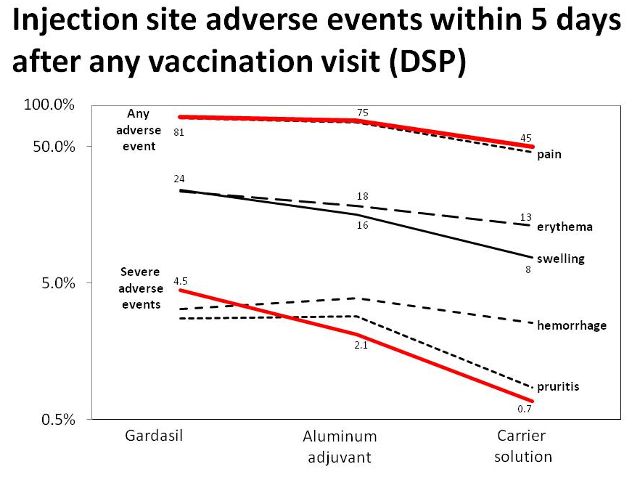
Based on the trial data, there is little doubt about the extent to which the HPV vaccine, and to a slightly reduced extent aluminium adjuvants, caused severe adverse events. Over a 12 month monitoring period, the chances of a child developing an autoimmune problem following vaccination were roughly 1/900 and of dying about 1/1200, with slightly lower incidents for the aluminium adjuvant.
Merck and the FDA wrote this off as statistically insignificant. Perhaps it could have been if the comparative results for the carrier solution group weren’t zero. Given that the lifetime chance of contracting cervical cancer is approximately 1/15625, with a 66% chance of survival, the trials suggest, for 11 yr old HPV vaccinated girls, they are at least 10 times more likely to be killed by the vaccine, within a year, than cervical cancer in later life.
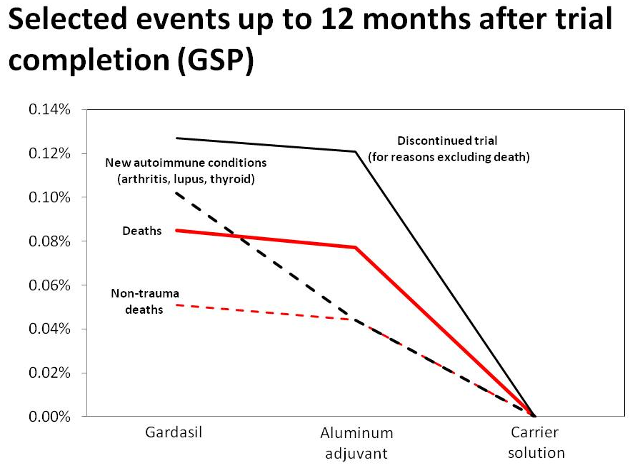
When the FDA’s CBER agreed the Biological License Application (BLA) for GARDASIL 9 in 2014 they didn’t feel it was necessary to refer the licensing to the medical advisory committee. As the manufacturing of GARDASIL 9 was identical to that of the original, they stated:
“CBER did not convene an Advisory Committee meeting to discuss licensure of GARDASIL 9. Information submitted in this BLA did not raise significant concerns or controversial issues that would have benefitted from discussion with an Advisory Committee.”
Merck decided that GARDASIL 9 safety could be inferred from GARDASIL safety data. They wrote:
“[the]….Safety of GARDASIL9 in individuals 27 through 45 years of age is inferred from the safety data of GARDASIL in individuals 9 through 45 years of age and GARDASIL9 in individuals 9 through 26 years of age.”
While this was apparently good enough for CBER approval it seems a bit odd. GARDASIL 9 more than doubled the aluminium adjuvant from 225 micro grams to 500 per dose. Given that there are more than 300 published paper on aluminium toxicity in humans on PubMed alone this decision is strange. Especially seeing as the serious adverse events for GARDASIL 9 were also notable.

A serious adverse event (SAE) is defined by the FDA. It is an event which either leads to death or is life-threatening, one that requires hospitalization or causes disability or permanent damage, leads to congenital abnormality/birth defect or the necessity to medically intervene to prevent permanent impairment.
In Merck’s trials for GARDASIL 9 the SAE rate was 2.3% (1/43.5), slightly better than the 2.5% for the original GARDASIL. To put this into context, for vaccinated young girls in developed nations this suggests the risk of SAE is approximately 359 times higher than their life time risk of developing cervical cancer without the vaccine. However, Merck only assessed the SAE risk for a 14 day period following vaccination. Therefore, it is safe to assume the actual SAE risk is higher than 2.3%.
What’s worse is that the original GARDASIL trials, which the CBER thought were fine to apply to GARDASIL 9, showed that for sexually active adult women, already exposed to HPV prior to vaccination, inoculation increased their cervical cancer risk by 44.6%.
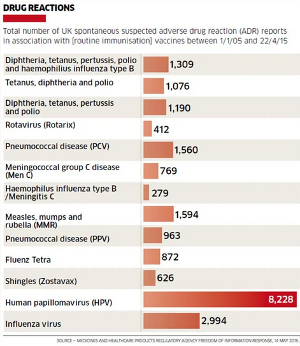
The HPV vaccine appears to be particularly problematic. According to the UK’s Medical Healthcare Products Regulatory Agency (MHRA) between 2005 and 2015 the vaccine adverse drug reactions (ADR’s) were of a magnitude greater than for other vaccines. Researchers from the Mexican National Institute of Cardiology, generously referring to the Merck trials as “randomised,” stated:
“Serious adverse event signals were already present in the largest randomised trials of HPV vaccines. These signals were ignored or minimised.”
So perhaps it isn’t surprising that families across the developed world are describing appalling reactions to HPV vaccines. Within days or even hours of inoculations hundreds of thousands of girls have reported a range of complication. Immediate reactions include sudden collapse and unconsciousness, seizures, muscle pain and weakness, chronic fatigue, facial paralysis and brain inflammation. Longer term effects have been reported as rheumatoid arthritis, lupus, blood clots, premature ovarian failure, optic neuritis, multiple sclerosis, strokes, heart failure and death.
From Ireland to India, France to Japan, the U.S. UK and everywhere where the HPV vaccine has been administered, there are thousands of surviving young women, and parents of the deceased, fighting for compensation and recognition of the problem. On the whole they are attacked as fantasist, liars or child abusing anti vaxxers. Though of course they aren’t anti vaxxers because they all trusted the science and chose to be vaccinated.
In reality, as averse to MSM land, senior medical experts, including those running the trials, have raised numerous concerns about the HPV vaccine. Dr. Stephanie Seneff, a senior research scientist at MIT, made a comparative analysis of adverse reactions for GARDASIL against those of other vaccines. She concluded:
“There is no way that the the risk benefit ratio comes out in favour of benefit. Particularly where they have not demonstrated that it actually protects from cervical cancer.”
Dr Diane Harper is a consultant who worked for both Merck and GlaxoSmithKline and was involved in the clinical trials. As a principle trial investigator, her role was to bring researchers together, recruit trial participants, monitor subject’s health and collect specimens. Her criticism are extensive. Speaking in 2010 she said:
“If the vaccinated person is not sexually active during the five years of its efficacy [by age 16 – 17], then the vaccine has not protected her from disease as we do not have evidence that Gardasil offers efficacy any longer than five years…..Pap smears have never killed anyone. Pap smears are an effective screening tool to prevent cervical cancer. Pap smears alone prevent more cervical cancers than can the vaccines alone……Gardasil is associated with serious adverse events, including death. If Gardasil is given to 11 year olds, and the vaccine does not last at least fifteen years, then there is no benefit – and only risk.”
[Note: Bracketed text added]
Another Merck physician, Dr. Bernard Dalbergue was interviewed in 2014 by the French health magazine Principes de Santé. His comments were not reported by any English speaking MSM outlets. You can read his original french interview here. During that interview he said:
“The full extent of the Gardasil scandal needs to be assessed: everyone knew when this vaccine was released on the American market that it would prove to be worthless! Gardasil is useless and costs a fortune! In addition, decision-makers at all levels are aware of it! I predict that Gardasil will become the greatest medical scandal of all times because at some point in time, the evidence will add up to prove that this vaccine……has absolutely no effect on cervical cancer and that all the very many adverse effects which destroy lives and even kill, [it] serve no other purpose than to generate profit for the manufacturers. There is far too much financial interest for these medicines to be withdrawn.”
[Note: Bracketed text added]
If you read the MSM for information on vaccines you will be told that they all save lives, are all perfectly safe and only stupid anti vaxxers ever question them. As ever, I urge you to follow the links in these articles, check the evidence, do your own research and make up your own mind. Only then can you decide if MSM claims are plausible.
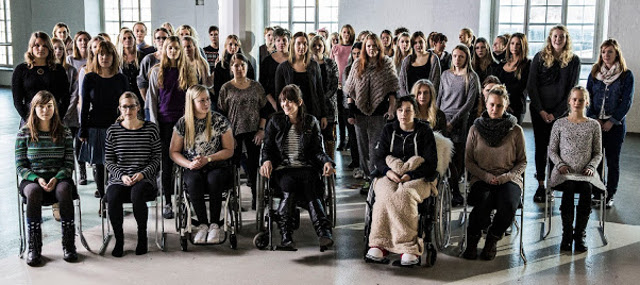
Reporting Nonsense
What is certainly implausible is any claim the official U.S. vaccine injury statistics are a reflection of reality. Indeed, you may wonder why the CDC & FDA bother maintaining the Vaccine Adverse Event Reporting System (VAERS) at all. When VAERS does show vaccine injury or death it is normally discarded as meaningless.
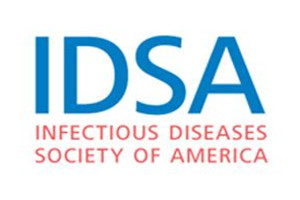 A 2015 investigation by the Infectious Disease Society of America (IDSA) looked at deaths reported to VAERS between 1997 – 2013. Of the 2149 deaths reported nearly 70% (approximately 1500) were children. Just over half of the associated deaths followed the influenza vaccine. Nearly 80% of the children who died (1200) had received one or more vaccines on the day they died. Of those child deaths nearly 55% (825) were attributed to Sudden Infant Death Syndrome (SIDS). Having analysed these statistics the IDSA concluded:
A 2015 investigation by the Infectious Disease Society of America (IDSA) looked at deaths reported to VAERS between 1997 – 2013. Of the 2149 deaths reported nearly 70% (approximately 1500) were children. Just over half of the associated deaths followed the influenza vaccine. Nearly 80% of the children who died (1200) had received one or more vaccines on the day they died. Of those child deaths nearly 55% (825) were attributed to Sudden Infant Death Syndrome (SIDS). Having analysed these statistics the IDSA concluded:
“No concerning pattern was noted among death reports submitted to VAERS during 1997–2013. The main causes of death were consistent with the most common causes of death in the US population.”
This finding is inexplicable given that child deaths don’t usually account for 70% of U.S. mortality. The IDSA, who like the CDC and FDA are beneficiaries of their own IDSA Foundation, enjoy the financial support of Gilead Sciences, Johnson & Johnson (via their owned subsidiary Janssen), who are currently researching a universal flue vaccine, and Pfizer who also make flu vaccines.
SIDS is an unusual cause of death, mainly because there is no medical evidence defining what it is. The UK NHS describe it as, “the sudden, unexpected and unexplained death of an apparently healthy baby.” In other words, no one has any idea why the infant died. As a cause of death the coroner may as well write “died” on the death certificate.
According to the IDSA’s 2015 study of VAERS, approximately 825 otherwise healthy U.S. children just ‘died’ either on the day they were vaccinated or very shortly thereafter. No one can possibly figure out why, because vaccines obviously have nothing whatsoever to do with it.
Upon his appointment as director of the Emory Vaccine Center in 2011, the former Deputy Director for the Bill & Melinda Gates Foundation Immunization Programs and Director of the U.S. Immunisation Program for the CDC Dr. Walter Orenstein co authored a CDC report discussing the CDC’s Morbidity and Mortality Weekly Report (MMWR). In reference to VAERS he and his colleagues wrote:
“Approximately 30,000 such reports are received each year. VAERS reports describe a temporal association and cannot prove causal relationships. CDC and others have developed additional systems to permit investigation of causality. Premier among these is the Vaccine Safety Datalink”
The Emory Vaccine Center were recently joint beneficiary of an estimated $200 million grant from the U.S. National Institute of Health (NIH), via the Georgia Research Alliance (GRA), to develop the next generation of flu vaccines.

The grants were awarded by the NIH’s Collaborative Influenza Vaccine Innovation Centers (CIVIC’s), a program of their National Institute of Allergies and Infectious Diseases (NIAID). The NIH funding partners include many of the leading vaccine manufacturers. GlaxoSmithKline, Merck, Pfizer, Sanofi are all behind their efforts. As is the Biotechnology Innovation Organisation (BIO) who represent 1,100 biotech companies operating in the U.S. and are the largest biotechnology trade organisation in the world.
It is notable that Dr Orenstein puts such faith in the Vaccine Safety Datalink (VSD) as evidence of causality. When he chaired the Simpsonwood Retreat meeting he didn’t seem so convinced:
“Analysis to date raise some concerns of a possible dose response effect of increasing levels of methylmercury in vaccines and certain neurologic diagnoses”
Dr. Orenstein knew in 1999 the Thimerosal vaccine adjuvant was a risk and was part of the committee who suppressed these findings. He was also Director of the CDC Immunisation Program when they declared Thimerosal to be perfectly safe following their cherry picking of 6 dubious studies. Had they looked at others, perhaps they would have come to a different conclusion.
For example, scientists from the Department of Neurosurgery at the Austin Methodist Hospital found that Thimerosal ethyl Mercury compounds caused DNA and Mitochondrial damage. Similarly in 2015 a team of research scientists reviewed numerous peer reviewed papers on the effect of Thimerosal. They concluded:
“The culmination of the research that examines the effects of Thimerosal in humans indicates that it is a poison at minute levels with a plethora of deleterious consequences, even at the levels currently administered in vaccines.”
However, none of the review studies were funded by the vaccine manufacturers. This may explain why the CDC have no knowledge of serious Thimerosal risks.
Even when adverse reactions are reported via the VAERS system, as far as the CDC and FDA, and other pharmaceutical corporation funded bodies like the IDSA, are concerned they are meaningless anyway. Completely ignoring the VAERS is probably wise from a business model perspective.
In 1994 the National Academy of Medicine (NAM – then called the Institute of Medicine) issued a report to the CDC which, in relation to VAERS, they noted, “The lack of adequate data regarding many of the adverse events under study was of major concern to the committee.” The CDC and the FDA seemingly did nothing and the NAM wrote another report 17 years later saying the same thing. The reporting was inadequate.
Clearly VAERS failings were well known. In 2011 the U.S. Department of Health and Human Services (HHS) commissioned Harvard Medical School to look at ways of improving VAERS. Instead of relying upon parents, many of whom didn’t know of VAERS existence, or reports from paediatricians, uncertain about what does or does not constitute a vaccine adverse reaction, the Harvard team developed an automated ‘active’ VAERS system.
This monitored patients health care diagnostic codes, laboratory tests, and medication prescriptions for 30 days following vaccination. These statistics were then evaluated for values suggestive of an adverse event.
The Harvard team ran a large scale comparative cohort study. They monitored 715,000 patients in total with 376,452 given 1.4 million doses of 45 different vaccines. A total of 35,570 possible adverse reactions were identified. This indicated that approximately 2.6% (2600/100,000) of vaccinations prompted possible adverse reaction. The Harvard researches stated in their report:
“Adverse events from drugs and vaccines are common, but underreported……fewer than 1% of vaccine adverse events are reported. Low reporting rates preclude or slow the identification of ‘problem’ drugs and vaccines that endanger public health.”
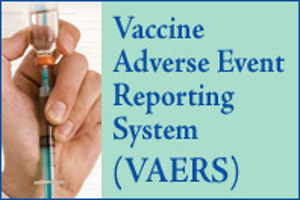 Having completed the work, identifying VAERS’ problems and, to a great extent, rectifying them, the Harvard team then made numerous attempts to work with the CDC to put the improved system into place. The CDC responded to the eminently qualified Harvard academics by blanking them. They chronicled this in their report:
Having completed the work, identifying VAERS’ problems and, to a great extent, rectifying them, the Harvard team then made numerous attempts to work with the CDC to put the improved system into place. The CDC responded to the eminently qualified Harvard academics by blanking them. They chronicled this in their report:
“Unfortunately, there was never an opportunity to perform system performance assessments because the necessary CDC contacts were no longer available and the CDC consultants responsible for receiving data were no longer responsive to our multiple requests to proceed with testing and evaluation.”
According to the CDC , content to continue ignoring a reporting system they know doesn’t reflect the true scale of vaccine harm, approximately 30,000 VAERS reports are filed each year. If the Harvard Medical School are correct, this is probably closer to 3 million. This is speculative, but what can be said is that VAERS massively underreports vaccine harm and official U.S. vaccine safety statistics are practically meaningless.
VAERS is the only way U.S. parents of vaccine injured children can report vaccine harm to the CDC. The CDC don’t consider this evidence of anything at all. They prefer to rely upon the opinion of the Advisory Committee on Immunization Practices (ACIP). ACIP draw data from the Vaccine Safety Datalink (VSD). The evidence shows, when the VSD provides evidence of vaccine harm ACIP are instrumental in burying it.
How Are Vaccines Licensed For Use?
U.S. Congress passed the 1980 Bayh-Dole Act enabling National Institute of Health (NIH) funded university research to generate profits by licensing their product to private corporations. As the largest single sponsor in biological research in the world, the U.S. Department of Health and Human Services (HHS) created its Public Private Partnership (PPP). They established the NIAID Partnership with PPP in 2007 to recoup some of this considerable HHS investment. The stated aim is:
“….to establish collaborations with diverse organizations to develop new drugs, vaccines, and diagnostics for neglected diseases. Such ventures include multiple partners and help to obtain funds and resources from public-sector agencies, philanthropic organizations, and others.”
Consequently the HHS hold numerous vaccine and vaccine technology patents. As a subdivision of the HHS, the NIH invests in research and development which frequently has commercial value. When the NIH funded R&D finds something potentially profitable the HHS patent it. The NIH’s Office of Technology Transfer (OTT) then grants commercial licenses for the HHS patents to its corporate partners.
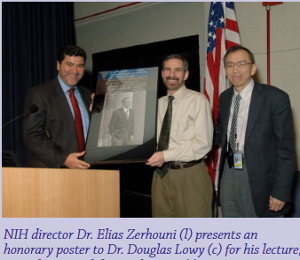 For example, Dr. Douglas Lowy was funded by the NIH to research and develop HPV virus-like particles (VLP). The HHS patented the VLP technology and the OTT licensed it to Merck and GlaxoSmithKline. Without the VLP technology Merck wouldn’t have been able to develop the HPV vaccine GARDASIL, nor GSK CERVARIX. In the February 2007 issue of their newsletter the NIH state:
For example, Dr. Douglas Lowy was funded by the NIH to research and develop HPV virus-like particles (VLP). The HHS patented the VLP technology and the OTT licensed it to Merck and GlaxoSmithKline. Without the VLP technology Merck wouldn’t have been able to develop the HPV vaccine GARDASIL, nor GSK CERVARIX. In the February 2007 issue of their newsletter the NIH state:
“Perhaps no other recent product on the market demonstrates successful health care technology transfer better than the human papillomavirus (HPV) vaccine, Gardasil, produced by Merck & Co. and approved by the FDA in June 2006.”
This licensing of vaccine R&D and the patenting of products produced by it, creates a huge financial conflict of interests at the heart of the U.S. vaccine regulatory system. The federal regulatory authorities, who license vaccines, also stand to profit from them. Perhaps most notably from GARDASIL. As long as the U.S. FDA CBER say a vaccine is safe, as they did for GARDASIL in 2006, then the OTT receives its share of the profits.
In 2018 the pharmaceutical corporations spent a conservatively estimated $281 million lobbying the U.S. politicians who are supposed to oversee the legislation which regulates their industry. Making pharmaceuticals the most powerful lobbying industry by a considerable margin.
The FDA, just like the CDC, receive funding from the pharmaceutical corporations. However, in the case of the FDA, that funding is more comprehensive.
In theory the FDA is supposed to be a government agency with ‘independent’ regulatory oversight of drug safety in the U.S. However, more than 45% of the FDA’s entire budget is provided by pharmaceutical corporations.
In 1992 U.S Congress enacted the Prescription Drug User Fee Act (PDUFA.) This meant the pharmaceutical corporations paid a user fee for new drug applications (NDA’s.) These are now referred to as Investigative New Drug applications (IND’s). Over the years the cost of the IND’s has increased significantly. Today the FDA state:
“Human Drugs regulatory activities account for 33 percent of FDA’s budget; 65 percent of these activities are paid for by industry user fees.”
Not only are the FDA a division of the HHS, who profit from licensed vaccine R&D, they are themselves largely reliant upon direct funding from the pharmaceutical corporations they ‘regulate.’ Just like the CDC.
 The FDA make their licensing decisions after considering the data handed to them by the vaccine manufacturer. Based upon whatever the manufacturer chooses to disclose, the FDA then design prescribing and usage information, dosage guidance, a list of known contraindications (supposedly ADR’s and SAE’s), and general packaging advice.
The FDA make their licensing decisions after considering the data handed to them by the vaccine manufacturer. Based upon whatever the manufacturer chooses to disclose, the FDA then design prescribing and usage information, dosage guidance, a list of known contraindications (supposedly ADR’s and SAE’s), and general packaging advice.
This is then handed to the CDC’s Advisory Committee on Immunization Practices (ACIP) who approve the labeling. Before distributing the vaccine to the public, the CDC undertake economic analysis to decide if the cost of the vaccine offers value for money against the healthcare costs of the disease it is supposed to prevent. Whether or not they take generated OTT profits into consideration isn’t clear.
The whole system of vaccine research & development, trials, approval, regulation, monitoring, study publication, distribution and inoculation is awash with pharmaceutical corporation money. Not only do they invest heavily in lobbying decision makers, they directly fund the state regulators who supposedly have oversight of their industry.
To all intense purposes, vaccine manufacturers regulate themselves. Further, the state is an active business partner of “Big Pharma” and all involved are immune from prosecution.
Conclusion
For some vaccines the statistical analysis and collection of vaccine harm data is poor; the studies which demonstrate vaccine efficacy lack concordance; vaccine studies published in so called prestigious publications are often biased and poorly evidenced, ensuring professionals are broadly misled; the evidence demonstrating both vaccine efficacy and safety are skewed by clear financial conflicts of interest and industry funding; there is a significant body of scientific, medical and statistical evidence to indicate serious vaccine safety concerns; the licensing of vaccines is controlled by the vaccine manufacturers and they, along with healthcare providers and regulators, have nothing to fear from prosecution no matter what harm they cause.
There are solid reasons to insist upon the use of the precautionary principle for vaccines, particularly in regard to the rapid growth of the vaccine schedule. It is against this background that anyone who questions vaccines is labelled an anti-vaxxer. The media created hysteria built upon this persecution is being used to push calls for mandatory vaccination across the West. Currently this appears to be for the benefit of multinational pharmaceutical corporations and venture capitalists who eagerly anticipate significant market growth.
You can call people anti-vaxxer’s if you wish. However, unless you have sufficient evidence to discount the concerns raised in this series of articles, and extensively elsewhere, those you label anti-vaxxer’s have grounds to doubt your opinion and awareness of the evidence. If you support mandatory vaccination for all, and simply accept everything the media and the state tell you about vaccines then, frankly, it isn’t those you accuse of being anti-vaxxers who have taken leave of their senses.

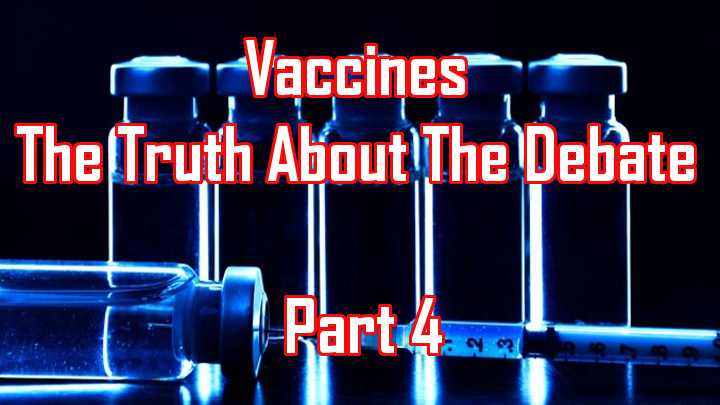







Superb, well-researched article, as always – many thanks, Iain, I learnt a lot.
I wonder… have you come across the Science Media Centre? If not, you really need to know about it. The SMC is a shady “charity” set up to “ensure that the public have access to the best scientific evidence and expertise through the news media” (their words, not mine). Mainstream journalists trust the SMC implicitly as a source of “accurate and evidence-based information”, and the SMC makes it easy for them to add an air of gravitas to their stories by providing bite-sized quotes from eminent professors in the field. Here’s an example of their output regarding the HPV vaccine…
https://www.sciencemediacentre.org/expert-reaction-to-hpv-vaccine-modelling-of-cancer-prevention-and-introduction-in-september-of-vaccine-programme-for-boys/
Thanks Fran. No I didn’t know about them. Many thanks.
You’ll have lots of fun exploring what they are all about. Here’s a cartoon to get you started.
http://www.auntiepsychiatry.com/red.aspx?ha=smc
Thanks Fran, just commented on your site.
Thanks for that! Glad you dropped by.
BTW, I am still waiting for a reply from the BBC Complaints Department about the fabricated photo of the “measles baby”. I submitted the complaint on 4th November. On the 12th November, I received a holding email:
“This is an update to let you know that we had referred your complaint to the relevant people and regret that it may take a little longer before we can reply. Please do not contact us in the meantime.”
How long is “a little longer”? Who knows. If I haven’t heard anything by the end of the week, I will chase it up.
Fantastic Fran. Please keep me updated.
Great article, Ian. Thanks.
Have you done any research/written any articles on other vaccines, specifically the TB and the shingles ones?. If yes, can you send me the link. If not, do you know of any reliable studies and where to find them?
Ta.
Stay sane!
PS. I’m giving you my website address. Fiery rants & rude political cartoons. They might amuse you.
Thanks UndeadDodo I’ll check out your site. this article is number 4 so I hope you’ll read the other three that cover other vaccine related issues. I’v also written about the Wakefield study and a number of other medical related subjects, though not TB and shingles specifically. Please feel free to have a nose around Iain Davis.
Thank you for all of your hard work in this area of concern. We have known for nearly 150 years that vaccines only do harm, not good. This information has been suppressed for reasons of insane profits and euthanasia for population control.
HOW VACCINATIONS HARM HUMANS:
It was in 1884 that the renowned MD Dr Compton Burnett remarked “We don’t introduce health with vaccines. We introduce disease.” The fundamental problem with vaccines is that they cannot prevent any disease. This is because prevention depends upon the cellular function of detoxification after exposure that establishes vital cellular immunity. Vaccines have never been able to do this. They can only create humoral or blood related antibodies. Antibodies only indicate that the body has been exposed, that’s all. They have no role in immunity. Rather humoral antibodies are known to create disease. An imbalance is created between two arms of the immune system that is known as the Th1 Th2 imbalance that predisposes the body to chronic degenerative diseases including cancers later in life. This is an established scientific fact that no one can deny.
On top of this the presence of adjuvants like nano aluminum and squalene in vaccines provoke the immune system into autoimmune conditions. The presence of food ingredients like peanut oil, exposure to latex used in vaccine packaging, presence of human animal and avian serum, all of which combines with aluminum in vaccines to create the condition which was earlier known as serum sickness and now as allergies, not only makes life miserable but also creates life threatening conditions.
Mercury in vaccines is the most dreaded neuro-toxin known to man and a geno-toxin. It corrodes the nervous system and brain. It’s potency to harm is multiplied several hundred times by the presence of aluminum and formaldehyde in vaccines. Moreover, it is ethyl mercury and not methyl mercury that is in vaccines. It is an industrial toxin that is 1000 times more toxic and passes more readily into the brain and stays there to cause progressive damage.
Vaccines cause the body and its organs to go into an inflammatory mode. Thus, it causes all the diseases whose names end in ‘itis’ and the list is very long! Vaccines contain aborted fetal tissue that contains both male and female DNA. This causes DNA contamination and could be behind the immense gender identity crisis that we witness in society today.
Vaccines contain known anti fertility agents and endocrine disruptors like Polysorbate 80 and 20, Triton X 100, animal and human hormones that mimic ‘hcg’ the dreaded anti fertility agent used in tetanus and diphtheria vaccines to actively induce sterility. Polysorbate 80 is an agent that is used to render the blood brain barrier ineffective and deliver drugs to the brain. Mercury and aluminum also have this ability to penetrate the blood brain and placenta barrier. They render these barriers porous and help the entire vaccine load penetrate the brain and fetus. The harm done is incalculable.
Vaccines contain known cancer-causing substances like formaldehyde and monkey viruses among others. By manipulating common childhood illnesses that actually help the body detoxify and prevent chronic conditions like cancers later in life and by directly introducing disease causing substances vaccines are creating the explosion of cancers and other chronic disorder epidemics we observe in society today.
Viruses used in vaccines revert to their original virulence, proliferate and create havoc within the body by confusing the vital system of cell communication. The panic disorders we observe today may be due to this. Vaccine adverse effects have a geno-toxic effect and have inter-generational effects crossing over to subsequent generations.
The above description only partially describes vaccination harm. With each passing day researchers are discovering more and more ways in which vaccines harm the physical mental and emotional make-up of the unfortunate victims.
Thanks Bob for a very informative comment.
Four long articles on vaccines… How is the average carpenter, shopkeeper or house mom supposed to makes sense of all this, let alone empower them for debate?
Why not keep it simple? Mention Dr Lanka who offered Eur 100K for anyone who could prove Measles. Or, how Dr Lanka followed virology standard protocol and found HIV, Ebola, Zika, Polio etc in any standard cell culture? This saves time wasted on vaccine articles. It’s already been going on for 200 years. When are we finally going to stop?
Thanks John. I think understanding the history of vaccination programs, looking at potential vaccine harms and the exploring the evidence exposing manipulation of the vaccine narrative is also important. I am aware that Lanka won his case proving that the claimant had not met the specific requirements of his competition rules. Though I note, despite many claims to the effect, the court did not accept that no one could prove the existence of the measles virus. Rather they accepted that the proof did not exist in the form specified by Lanka. I am also aware of Lanka’s recent claims about a forthcoming published paper disproving the virology method. I look forward to reading the the long awaited publication of this paper.